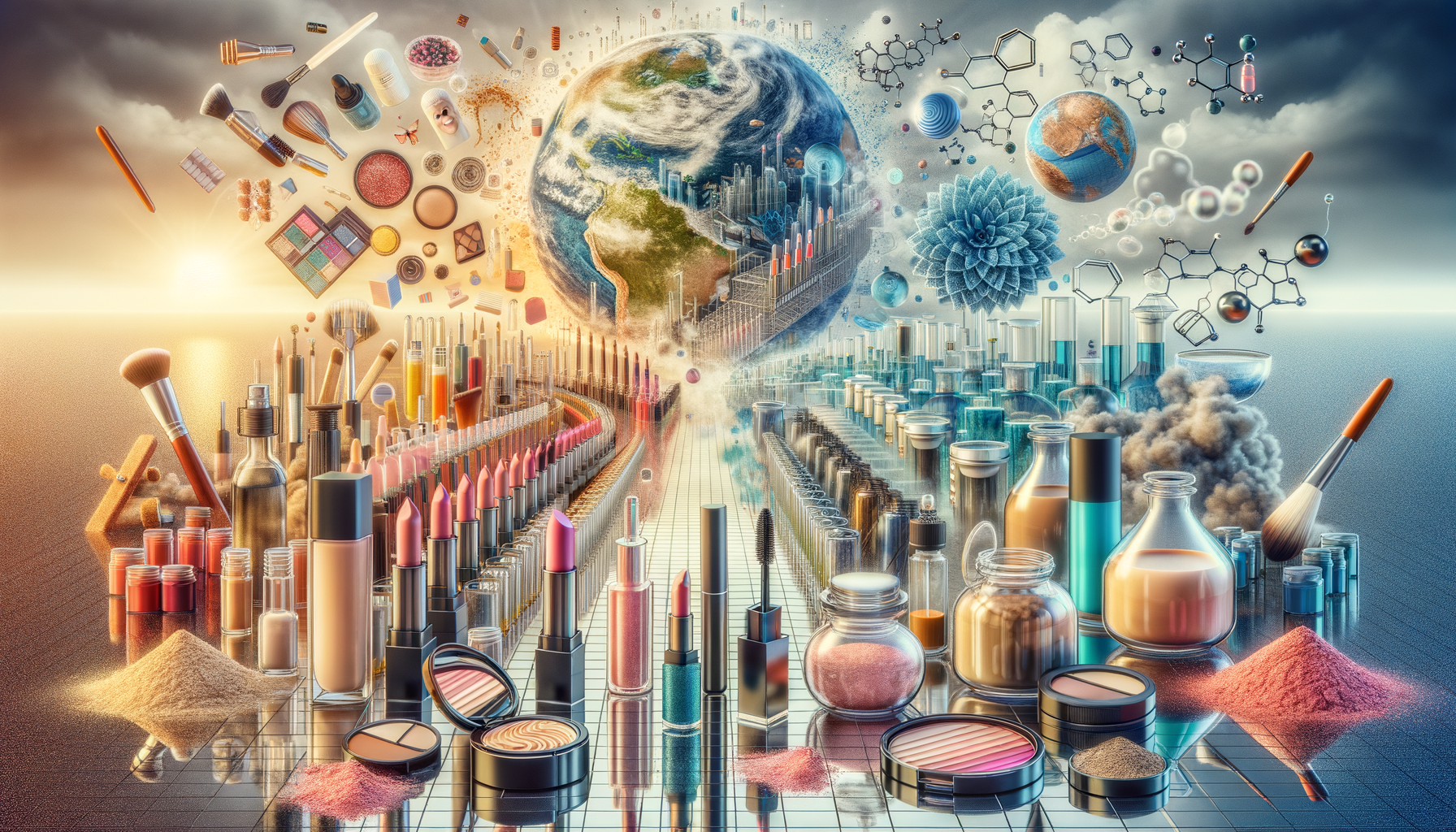Exploring the World of Cosmetics: Beauty, Science, and Trends
Cosmetics play a vital role in enhancing beauty and boosting confidence, making them an integral part of daily life.

The Evolution of Cosmetics: A Historical Perspective
Cosmetics have been a part of human culture for thousands of years, evolving from ancient rituals to modern beauty essentials. The earliest records of cosmetic use date back to ancient Egypt, where both men and women used kohl to define their eyes. This practice was not only for aesthetic purposes but also believed to ward off evil spirits and protect against eye ailments. As civilizations progressed, so did the art of cosmetics, with the Greeks and Romans introducing more sophisticated beauty regimes.
In the Middle Ages, cosmetics were often viewed with suspicion, associated with vanity and deceit. However, the Renaissance marked a turning point, as beauty became a symbol of wealth and status. The 20th century brought about a revolution in the cosmetic industry, with the introduction of mass production and advertising. Today, cosmetics are a multi-billion dollar industry, reflecting diverse cultural influences and technological advancements.
Understanding the history of cosmetics helps us appreciate the cultural and social significance of beauty practices. It highlights how cosmetics have transcended mere appearance, playing a role in self-expression and identity. As we delve deeper into the world of cosmetics, it’s fascinating to see how historical trends continue to influence modern beauty standards.
The Science Behind Cosmetics: Ingredients and Innovations
The cosmetic industry is not just about beauty; it’s a blend of art and science. Understanding the ingredients and innovations behind cosmetics can help consumers make informed choices. Modern cosmetics are formulated using a wide range of ingredients, from natural extracts to synthetic compounds. Each component serves a specific purpose, whether it’s moisturizing the skin, providing sun protection, or enhancing color.
Recent innovations in the industry have focused on sustainability and safety. There is a growing demand for eco-friendly products, leading to the development of biodegradable packaging and natural ingredients. Scientific advancements have also enabled the creation of hypoallergenic and non-comedogenic products, catering to sensitive skin types.
Moreover, technology has played a crucial role in the evolution of cosmetics. The use of nanotechnology, for instance, has allowed for the creation of products with improved absorption and efficacy. As consumers become more conscious of what they apply to their skin, the industry continues to innovate, ensuring that products are both effective and safe.
Cosmetic Trends: What’s Shaping the Future?
The world of cosmetics is dynamic, with trends constantly evolving to meet consumer demands. One of the most significant trends is the shift towards inclusivity and diversity. Brands are expanding their shade ranges and formulating products that cater to all skin tones and types. This movement has been driven by consumer advocacy and the rise of social media, which has amplified diverse voices.
Another trend is the rise of clean beauty, which emphasizes transparency and sustainability. Consumers are increasingly seeking products free from harmful chemicals, opting for brands that prioritize ethical sourcing and production. This trend has led to the popularity of organic and vegan cosmetics, which promise both safety and efficacy.
Technology is also shaping the future of cosmetics. Virtual try-ons and personalized beauty solutions are becoming more prevalent, offering consumers a tailored shopping experience. As the industry continues to innovate, it’s clear that the future of cosmetics will be defined by inclusivity, sustainability, and technology.
The Impact of Cosmetics on Society and Culture
Cosmetics have a profound impact on society and culture, influencing beauty standards and self-perception. In many cultures, cosmetics are seen as a form of self-expression, allowing individuals to showcase their personality and creativity. They also play a role in boosting confidence, helping people feel more comfortable and empowered in their own skin.
However, the societal pressure to conform to certain beauty ideals can be challenging. The portrayal of beauty in media often sets unrealistic standards, leading to issues such as low self-esteem and body image concerns. It’s important for the industry to promote positive and diverse representations of beauty, encouraging individuals to embrace their uniqueness.
Despite these challenges, cosmetics remain a powerful tool for self-expression and empowerment. They offer a way for people to connect with their culture and heritage, preserving traditional beauty practices while embracing modern trends. As society continues to evolve, cosmetics will remain an integral part of cultural identity and personal expression.
Choosing the Right Cosmetics: Tips and Considerations
Selecting the right cosmetics can be overwhelming, given the vast array of products available. However, understanding your skin type and personal preferences can simplify the process. Here are some tips to help you choose the right cosmetics:
- Identify Your Skin Type: Knowing whether you have oily, dry, combination, or sensitive skin can guide your product choices. Look for formulations that cater specifically to your skin’s needs.
- Read Labels: Pay attention to ingredient lists and certifications. Opt for products that are free from harmful chemicals and prioritize natural ingredients.
- Consider Your Lifestyle: Choose products that fit your daily routine and lifestyle. If you’re always on the go, look for long-lasting and multi-purpose products.
- Test Before You Buy: Whenever possible, test products before purchasing. This can help you determine if a product suits your skin tone and texture.
Ultimately, the right cosmetics should enhance your natural beauty while aligning with your values and lifestyle. By making informed choices, you can build a beauty routine that is both effective and enjoyable.